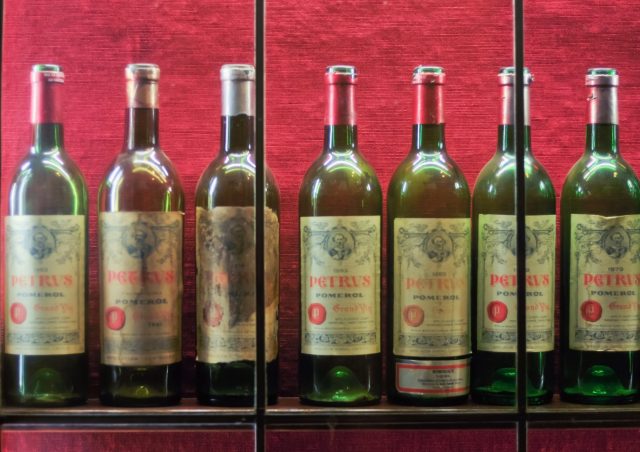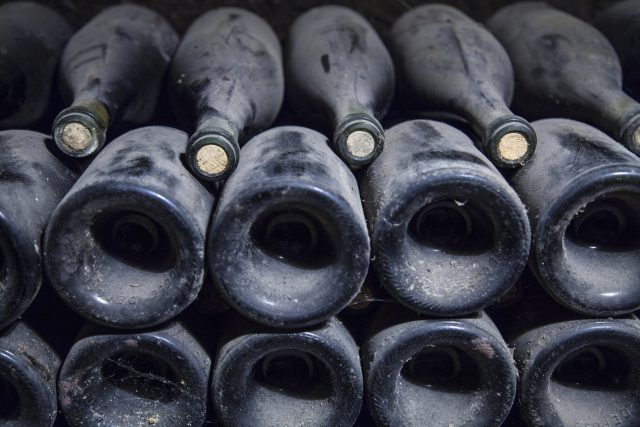This website uses cookies so that we can provide you with the best user experience possible. Cookie information is stored in your browser and performs functions such as recognising you when you return to our website and helping our team to understand which sections of the website you find most interesting and useful.
Where did all the benchmark wines go?
What happens when the classics of the great wine regions are no longer accessible to taste and benchmark newer releases against?

About 25 years ago, during an interview with the late Jean-Bernard Delmas, then director of the Bordeaux First-Growth Château Haut-Brion, our conversation turned to the highly rated, small-production Bordeaux garagiste wines that were attracting attention and very high critical ratings in the wine industry.
Visibly irritated, Delmas related how the ultra-small-production Le Pin, a Pomerol wine considered the benchmark of garagistes, had been poured at a recent luncheon of prominent château directors.
“They asked how many of us had tasted Le Pin before, and only one hand went up!” an aghast Delmas reported. “My wines are expensive, but we make enough of it that anyone who wants to buy it can!”
Fast-forward to Paris earlier this year and the annual Association de la Sommellerie Internationale (ASI) contest for the title of World’s Best Sommelier. There, the three finalists in a blind tasting were poured two separate vintages of an even more-famous benchmark wine – Petrus. All identified the wines as fine Bordeaux made primarily from Merlot grapes, but none of them guessed it’s actual identity.
No one, not even people in the trade, was really surprised the three didn’t recognize either wine as Petrus. Except for well-to-do collectors, how many sommeliers and people who work in wine shops can afford to taste a wine that typically sells for about US$5,000 a bottle?
Both stories raise questions about benchmark wines – those to which other wines are compared for typicity and quality – and how increasingly they are hard to find and are affordable only by the most wealthy drinkers and collectors. In addition to Petrus, other traditional “benchmark wines” such as Salon Champagne retails for about £1,500 and Domaine de la Romanée-Conti Grand Cru (DRC) costs more than US$26,000.
Just a few years ago, things were quite different.
“We used to be able to each throw US$20 on the table and drink a [Bordeaux] First Growth,” says Doug Frost, one of only four people to hold the titles of Master of Wine and Master Sommelier.
“I was lucky enough to drink all the relevant benchmarks. But I had a 1996 Salon a few months back, and one of the other sommeliers was shocked when I said that it had been at least a decade since I had tasted Salon.”
The London-based Liv-ex exchange, where collectors worldwide buy and re-sell on the secondary market, confirms this skyrocketing in prices.
Since 2003, “the Petrus index is up 517.87%, and DRC Romanée-Conti index is up 1,280.62%,” reports the exchange’s head of content, Nicola Graham. Seeing their wines re-sold at auction for many times what they charged for it entices producers to further hike their release prices to get more of the gravy.

But why should the trade even worry about benchmark wines?
“Benchmarks and archetypes are essential to know and recognize,” says Master Sommelier and wine entrepreneur Evan Goldstein. “Having an understanding and recognition of classic prototypes in wine—be it a red left bank Bordeaux, a Russian River Pinot Noir, a Marlborough Sauvignon Blanc or Mosel Kabinett—well, it is important to know. Sommeliers must know wine classics to have meaningful conversations, relate to their customers and colleagues and otherwise have a foundation to work from on the floor.”
The same is true of wine retailers, wine educators and wine writers trying to explain to their constituencies what great wines from a region should taste like.
“Benchmark producers are important to define the type of retailer you are or trying to become,” says Ken Irving, director of fine wine for Westchester Wine Warehouse. “It also defines the type of customer a store is looking to attract.”
As Mary Ewing-Mulligan, perhaps America’s most-influential wine educator as head of the International Wine Center in New York, explains, there are different levels of benchmark wines for different levels of professional instruction.
“In teaching, we use what we call ‘textbook examples’ at our lower levels,” she says.
“These would be wines that are representative of common types of wine, so that if a student tastes only that one red Zinfandel, they would still have an understanding of that type of wine. Then at higher levels of instruction, we flesh out their experience by showing not only a California Chardonnay, for example, but also a Chablis, explaining the natural factors that make each different. As we advance to higher-level courses, we seek to use higher quality wines as our prototypes because the students are increasingly experienced and need to understand levels of quality.”
However, as the prices for Petrus and DRC rise, so do the prices of the textbook wines.
“Even regular wines are rising in price,” Ewing-Mulligan says, “let alone the elite Bordeaux and Burgundy. I wonder whether these sommeliers ever tasted Romanée-Conti! I haven’t tasted it in probably 20 years.”
Correspondingly, even collectors who can afford Petrus and DRC can’t truly afford it.
Duncan Sterling, whose Sterling Fine Wine Consulting in New York caters to collectors worldwide, says even they feel sticker shock. “Most [collectors] have DRC and Petrus, but at these levels, it’s not so much the cost of acquiring, as it is one of, ‘Can anything taste that good?’” he says.
And there is much less willingness to share these benchmarks.
“People were incredibly generous, opening things for me when I was learning about wine,” Sterling says. “But the Mugneret-Gibourgs and Rousseaus [Burgundies] have just become so expensive. While I would share one at a dinner with friends with someone who never had it, but just to open it, drink it with them to see what they thought – not now!”
According to Frost, we keep teaching people about wines “they’ll likely never see, taste or sell.”
He asks: “So to what benchmarks should we be teaching? It’s an argument that a lot of us are having right now. I think that certain classic areas, like Champagne, Burgundy and Bordeaux, can be taught with attention to the wines of the middle rank.”
Hortense Bernard, managing director of the Millesima USA branch of the Bordeaux négociant house, thinks that a benchmark wine should be typical or indicative of a region, regardless of its price or rating.
“Pomerol is such a small place, so Petrus is a legitimate benchmark,” she says, “but Yquem is not [a benchmark] in Sauternes – it’s so much better, and no other Sauternes tastes like it. Then you have Château Margaux, also a superior wine for the region. And the Margaux region is so large and different that no one wine can be a benchmark.”
Goldstein agrees that “the best-rated wines may not be the most-classic. You want someone to have the occasion to set their palate with the most-precise example of what a wine should take like. I want to show someone the most ‘Bordeaux’y’ Bordeaux, regardless of whether it scores 89 points or 100 points.”
Indeed, as more than one cynic of ratings and blind tastings has pointed out, when they taste wine after wine that are somewhat similar, the one that stands out as “different” breaks the monotony and gets the highest score, typicity be damned.
Bernard thinks that the ideal benchmarking experience for trade professionals is to seek out tastings featuring many producers from the same region, such as Bordeaux’s annual spring sampling of the previous vintage, an event called “Primeurs.”
“If you taste 30 wines from the same region and the same vintage, you have a pretty good idea of how wines from Pessac-Leognan differ from those of St. Estephe,” she says.
Sommelier Arvin Rosengren has a personal perspective of the benchmarking controversy, as he was chosen world’s best sommelier in the 2016 competition and also helped run the recent one.
“I’ve often said I wished I had been born earlier, when all those English writers could actually go out and purchase these wines for themselves, many when they were still in university,” he says.
“That doesn’t exist anymore. You might be able to taste some of these wines if you are a sommelier in a great restaurant with great wine lists.”
Then why put not one, but two Petrus vintages into the final competition? Showmanship, he hints. “We decided to put down some really famous wines. We were in Paris, so many people were watching, all the media attention,” he says. “It was a good experience for the candidates to have tasted these wines.”
It is true that some benchmark producers conscientiously show their wares in major cities to trade and media – although, of course, only a select few can be invited. Ornellaia, a Super Tuscan benchmark from the Bolgheri DOC, does this with each new vintage.
“In addition to the latest vintage release, we always add some older vintages of Ornellaia,” says communications manager Elena Oprea. “This gives more context to the presentation of the last vintage, showing the evolution of the wine and enhancing our belief that each vintage is unique, not best or worst.”
But, Goldstein ventures, perhaps even benchmarks have become moving targets beyond anyone’s control.
“The big ‘a-ha’ is that, due to climate change and such, benchmarks are evolving. What used to be classic Sancerre, for example, shows less typical today than it did just a decade ago,” he says. “Ditto for many a French Chablis – and look at the 2020 red Burgundy color and extraction!”
Finally, even those prominent in the wine trade don’t always get to taste benchmarks. For example, Petrus is unusual in that it self-distributes its wine, unlike other major Bordeaux producers who sell their wines via several Bordeaux negociants, including Bernard’s Millesima.
She says, “When I ran our retail shop in New York [which sells Petrus], I got to taste Petrus. But now that I’m back in the negoçiant side of things, I can’t taste Petrus, even during primeurs! For me, Petrus has also become unattainable.”

